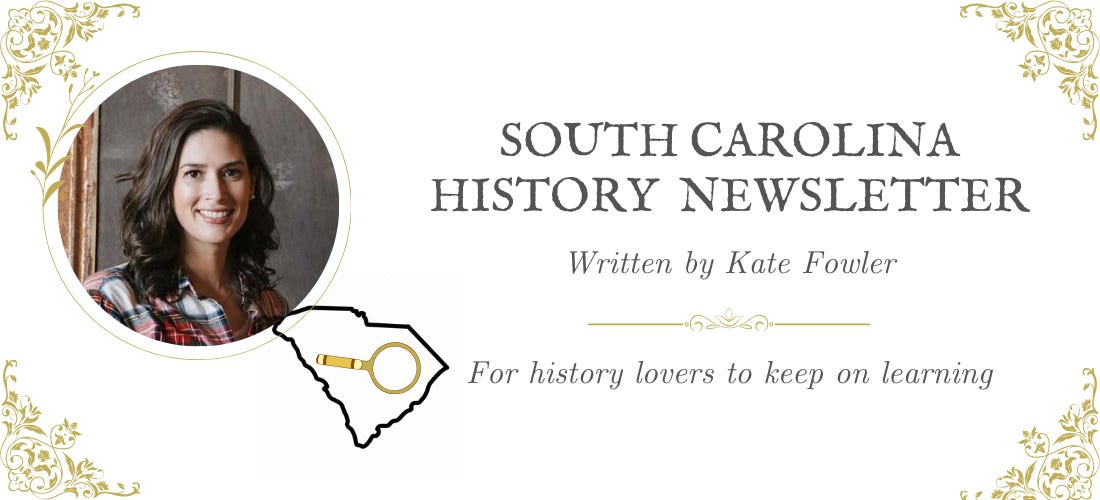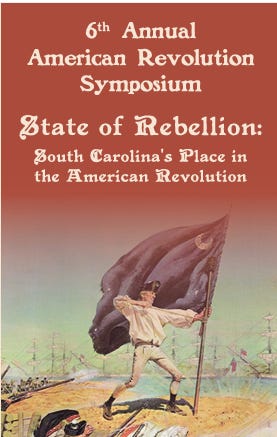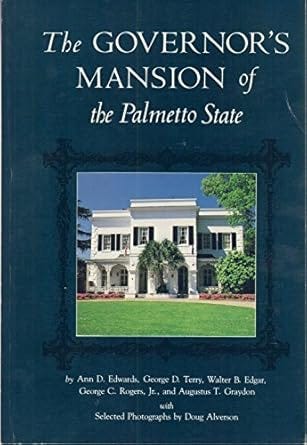#121: Antebellum Newspapers & Literary Societies, American Revolution Symposium, and The Governor's Mansion
For South Carolina history lovers far and wide! Published weekly on Monday mornings. Enjoy weekly SC history articles, interviews w/ experts, book recommendations, and upcoming SC historical events.
Dear reader,
Welcome to SC History Newsletter #121!
A few important thoughts for you today about the future of the SC History Newsletter:
I can’t believe it’s been almost 9 months since I started the newsletter, and I am SO grateful for every single one of YOU — my amazing subscribers — who inspire me to keep writing every single week. Especially when I am writing late into the night after my 9-5 job :)
Thank you to everyone who has forwarded one of my emails to a friend, emailed me a newsletter topic, encouraged me in my writing, submitted a newsletter rating (poll at the bottom of every email), followed us on Facebook, and so much more!
In the coming months, I will be building a strategy to take the newsletter to the next level!
My goals are:
(1) I want to reach even more South Carolina history lovers across the state (and the nation!).
(2) I want to explore and provide my followers with more ways to learn and experience South Carolina history — such as through virtual lectures, in-person history tours, workshops, and more!
(3) In order for the newsletter to grow, I will need additional support through sponsorships, grants, and more.
Some additional thoughts:
I feel strongly that the weekly newsletter should remain FREE
I truly appreciate everyone who has “upgraded” to a paid subscriber to support my efforts! You don’t know how much it means to me. In fact, if you enjoy the newsletter, I encourage you to scroll down to upgrade if you are moved to do so! I would so appreciate it.
I would like to start courting sponsors for the newsletter.
We have an active and engaged audience of over 800 subscribers!
I have some ideas for sponsors, but before I reach out “cold turkey”, I wanted to ask you, my wonderful readers: do you own a business or do you have a connection to a business (or businesses) who would be interested in possibly sponsoring the SC History Newsletter? Or, do you have ideas of businesses I should reach out to? I would so appreciate your feedback!
Once again, I am so grateful for EACH & EVERY one of you! Thank you for your interest and curiosity in the amazing history of South Carolina.
And now, let’s get on with our regular announcements :)
As always, I’d like to welcome the following new subscribers to our community. Thank you for your interest in South Carolina history!
nepowergal
1maddog111
celia.girard61
chandlercobb1
New friends! If you are new to the newsletter, please note that there are over 100 previous SC History newsletters on topics ranging from the founding of Charleston, sunken Confederate submarines, railroad tunnels filled with blue cheese, and so much more! I encourage you to take a look at our archive here.
Send me your topic ideas: I love it when subscribers write to me! Have a SC History topic or question you’d like for me to write about? Just reply to this email and let me know!
Join us on social: Please join us & keep the conversation going by becoming a member of our SC History Newsletter Facebook Community here! I can’t wait to meet you. :)
If your email “cuts off”: In your email app or website, if my emails “cut off” for you, please click the title of the email and it will take you to the full post on the Substack. I don’t want you to miss any content!
And now, let’s learn some South Carolina history!
Yours truly,
Kate
(Writing from Greenville, SC)
➳ Featured SC History Events
Please note our featured SC History Event below, and click here to visit my SC History Events Calendar that organizes all the upcoming SC history events I have discovered.
Please let me know if you’d like to add an event to the calendar! Reply to this email to send me your events.
Event Recommendation of the Week:
Saturday, November 16th | “2024 Annual American Revolution Symposium” | Columbia, SC | Tickets
“Whether you are an American Revolution novice or an expert, you will enjoy this program! Here are some of the topics that will be discussed:
-Researching Revolutionary Era Women in the Digital Editions of the Papers of Eliza Lucas Pinckney, Harriott Pinckney Horry, and the Pinckney Statesmen — Speaker: Mary Sherrer, SC Dept. of Archives & History
-UNSUNG: William Moultrie and the Battle of Sullivan’s Island — Speaker: Norm Rickeman
-South Carolina’s Irish Patriots in the American Revolution — Speaker: Tom Elmore
-SC 250th Commission Update and Liberty Trail Update
-Charles B. Baxley Keynote Presentation: Patriots of Color in the Carolinas — Speakers: Mr. Luke Alexander, Mr. Kevin Graham, and Mr. Tyrone Goodwyn
- 71st Highland Regiment in South Carolina — Speaker: Kim Stacy
- Remember Me, For I Am Not Forgotten: Women and the American Revolution — Speaker: Riley Sutherland, PhD, Harvard University.”
➳ SC History Book, Article, & Movie Recommendations
“The Governor’s Mansion” by Ann D. Edwards
(Note from Kate: I found this book in a dusty corner of my local library and I was charmed by the history of the SC Governor’s Mansion, the history of its inhabitants, and the interior photos of historical objects kept at the mansion, and evolution of the design aesthetic inside over the years. Now I want to take a tour of the Governor’s Mansion!)
Publisher’s description:
“When Columbia was established as the capital in 1786 and sessions of the General Assembly began in 1791, the governors stayed in boarding houses, hotels, rented houses or houses of their own for the month or so that the Assembly was in session.
One of the few state structures left standing after the devastating fire of February, 1865, during General Sherman’s occupation of Columbia, was the Officers’ Quarters building of the Arsenal Hill Academy. Governor James L. Orr designated this building which had been erected in 1855 as the governor’s residence.
This book is the story of that building and its occupants—a Mansion? Perhaps, but it is really the home of South Carolina’s first families. This is that story.”
Have you read this book? Tell us your review! Leave a comment below!
➳ SC History Topic of the Week:
In the Antebellum Era, what did South Carolinians read in terms of magazines, newspapers, books, almanacs, and more?
(A note from Kate: I am currently reading “Antebellum South Carolina” by Rosser H. Taylor, and the majority of my essay below is a synopsis of his brilliant research into what South Carolinians (who could — and were allowed to — read) were reading in this era.)
In Antebellum South Carolina (1812-1861), there were limited number of South Carolina-published periodicals, but locals deemed it their patriotic duty to subscribe and support these publications.
Charleston was a “publishing center of no mean importance” and historical records of the time share the names of 11 journals in particular: Gospel Messenger, Southern Christian Advocate, Southern Baptist, Southern Presbyterian, Catholic Miscellany, Southern Agriculturist, Medical Journal and Review, Masonic Miscellany, The Magnolia, Literary Gazette, Russell’s Magazine and The Southern Review.
There were also 2 popular publications for children, with sweet names: The Southern Rose, and The Schoolfellow.


Of all the locally published publications above, The Southern Quarterly Review, under the management of South Carolina author William Gilmore Simms, was the most prestigious.
Outside of Charleston, the next center for printing was Columbia, which boasted “4 newspapers and 2 reviews.”
Local publications didn’t hold a candle, in terms of “prestige” to the English publications, which most of the South Carolina gentry subscribed to, including Blackwood’s, London Art Journal, Gentleman’s Magazine, and Edinburgh Review. These publications were regularly displayed and sold in the bookshops of Charleston and Columbia.
And while there was an aversion to publications from the North, the South Carolina elite were still dedicated to staying abreast of articles in Harper’s New Monthly Magazine (“copiously illustrated”), Godey’s Lady’s Book (“with fashion plates in color”) and Graham’s Magazine. Many of these publications were delivered directly to people’s home via monthly subscription.
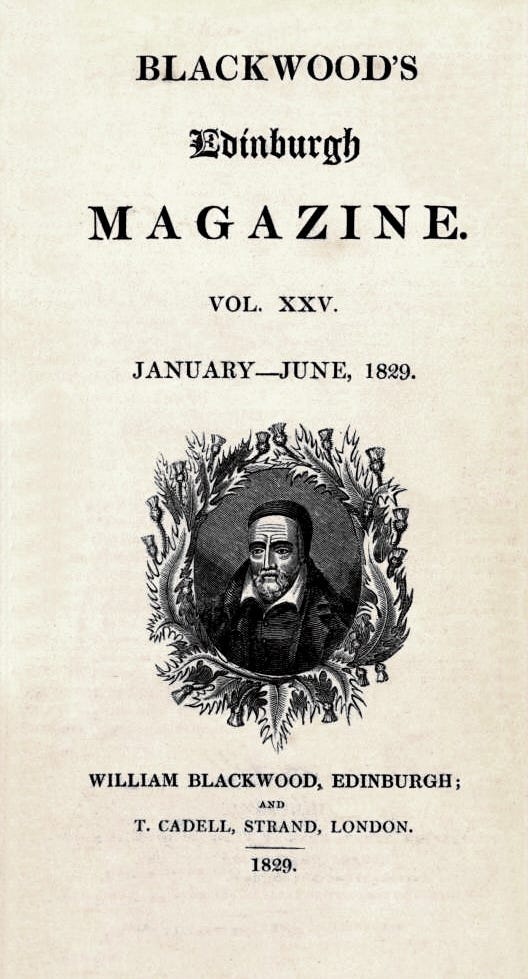
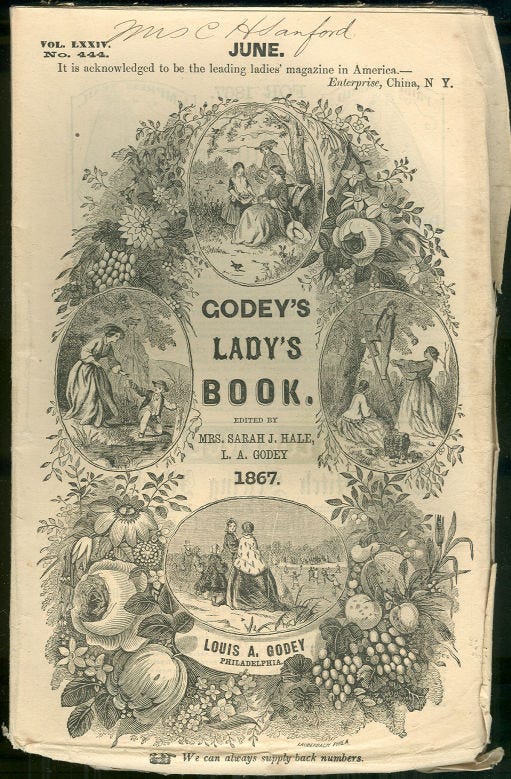
There was a printing press “in nearly every leading inland town.”
In general, newspapers read in antebellum South Carolina:
“…carried a dearth of social items and a plethora of foreign and domestic news. They featured national political issues, the proceedings of the state legislature and accounts of local political and religious gatherings. In addition, attention was given to storms on land and sea, disastrous floods and other national phenomena. In the absence of long editorials, the columns were open to correspondents, whose political tirades were not always calculated to clarify political atmosphere.”
The only local South Carolina newspapers that received national attention were The Charleston Courier (founded 1803, and would become The News and Courier), and The Charleston Mercury.
In general, South Carolinians would have viewed “the newspaper as inferior to the magazine.” Newspapers were mostly about disseminating information and “arousing interest in political issues.”
In terms of books, for educated men in South Carolina, the ancient classic texts were front-and-center in both a men’s early education, college, and beyond. Women read the classics as well, but were not expected to gain higher levels of education like men were.
Men also read treatises on “science, agriculture, history and philosophy.”
Culturally, ladies were encouraged to read “light and romantic subjects.” They read novels, Godey’s Lady’s Book (“full of good stories, sweet poetry, and beautiful pictures”), religious works, and the classics.
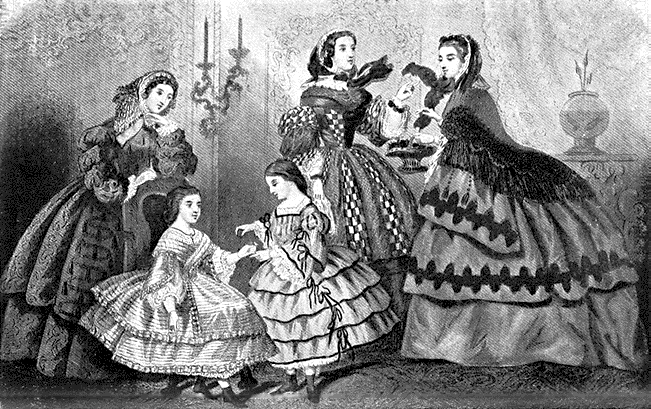
Books that glorified chivalry and heroism were very popular. The novels of Walter Scott were particularly popular with educated men, as they were filled with “border warfare, tournaments and crusades, in which red-blooded men were heroes and helpless but lovely women were heroines.” In general, Antebellum male planters and gentry shared a “knightly attitude towards ladies of quality.”
In private book collections, along with the classics, English authors were in the greatest demand.
Farmers and planters also purchased almanacs to aid them in their farming efforts, weather forecasting, and general useful agricultural information. Miller’s Almanac, which was published in Charleston, was considered one of the best. It contained detailed information about the time of the rising & setting of the sun and moon, a list of “fasts & festivals observed by the Protestant Episcopal Church,” and a “list of the chief national, state and city officials.”

There were not very many Antebellum literary giants in South Carolina. The writing profession was not a highly regarded job, and many writers, including William Gilmore Simms (mentioned above), were “poverty-stricken” and has to resort to “hack jobs” to “keep the wolf from the door.”

While in general, the literary arts were not encouraged as a profession, South Carolinians were very active in creating political pamphlets. Author Rosser E. Taylor writes:
“Perhaps no state in the Union produced a greater body of pamphlet literature than South Carolina. Speeches, essays, and sermons appeared year after year in pamphlet form for distribution at a small price or none…”
South Carolina poetry did not particularly thrive in this period. Those who did attempt to write poetry did not speak to life in the state, but rather, were pushed to imitate British poetry, which at the time, was very melancholy in nature. Magazines published poems with somber titles such as “Breathings of a Melancholy Mind” and “The Voice of Solitude.”
South Carolina poets Henry Timrod (1829-1867) and Paul Hamilton Hayne (1830-1886) did make a name for themselves, with Timrod having written a poem called “The Cotton Boll,” which author Rosser E. Taylor believes is “almost the first Southern poem.”
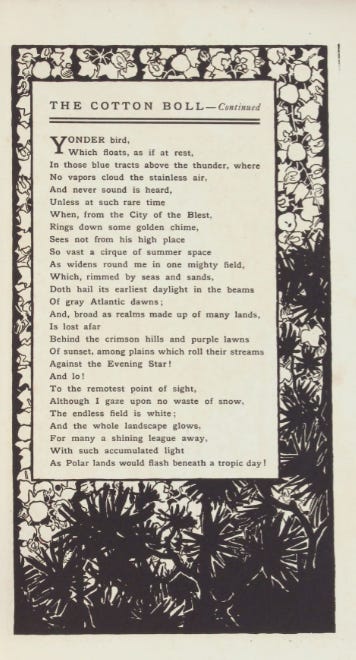
Of local novel writers, William Gilmore Simms wrote “romances of border warfare” and Dr. John Irving was an author who wrote A Day on the Cooper River, which actually attempted to describe the life of the people of the time.
John C. Calhoun, a wealthy planter and towering political figure of South Carolina in this period (see SC History Newsletter #99 about Calhoun here) wrote many treatises on government that remain important pieces of American political literature and history to this day.
What percentage of white people could read? It is not clear, but with each decade, educational institutions of the state expanded, and there was a broadening of literacy (a newsletter topic for another time!). Though at this time, literacy was mostly relegated to the wealthier classes. Literacy amongst “poor whites” was very low. Per author Rosser E. Taylor:
“A small number of people read magazines, a larger number read the newspapers, and a still larger number read the almanacs and the Holy Bible.”
And what of the enslaved Black population of South Carolina? After the Stono Rebellion in 1769, slave codes were instituted in South Carolina and other southern colonies. There were numerous restrictions to “enforce social control” including that enslaved people could not leave their owner’s property without permission, they would not assemble unless a white person was present, they could not own firearms, and — for the theme of this particular newsletter — they could not be taught to read or write, or to “transmit or possess ‘inflammatory’ literature.”
Many Low Country planters had “well-stocked” libraries, including General Thomas Pinckney’s home on the Santee River. An English traveler and guest of Pinckney’s remarked that the library contained an impressive collection of British works and a “more extensive collection of agricultural works than I have ever seen before in a private library.” Governor Hammond’s estate “Redcliffe” was also known to have an extensive collection of political texts.
There were also library societies and organizations in Antebellum South Carolina that provided the public with access to books, for small fees. By 1832, the Greenville Female Library Society contained over 5,000 books. Books could be “checked out” for 12.5 cents per book, and the annual dues were $2.
There were also literary societies in Camden, Georgetown, Stateburg, Edgefield, Beaufort, and Walterboro.
In Charleston and the Low Country, one of these literary societies had the fun name of “Conversazione.” The weekly meetings were held in people’s homes and produced conversations around “literary and scientific subjects.” After these discussions, there would be “sumptuous entertainment…with sparkling wine and yet more sparkling wit.”
Other literary societies of note were the Hibernian (for the Irish community) and the German Friendly (for the German community).
It is also exciting to learn that there were “lyceums” in South Carolina which were organizations that organized public lectures and debates. The chief aim was to advance the public knowledge in science and literature through these public forums. A lyceum in Greenwood, SC had paid membership, “a constitution and offers elected annually.” There was also a lyceum in Greenville. Some of these lyceums even attempted to “make a collection of minerals and other natural curiosities.”


➳ Sources — SC Election History
“Southern Rose.” Internet Archive, vol. 7, no. 1, 1 Sept. 1938, p. 8. Internet Archive, https://archive.org/details/sim_southern-rose_1938-09-01_7_1/page/8/mode/2up. Accessed 9 Nov. 2024.
Taylor, Rosser H. Antebellum South Carolina: A Social and Cultural History. The University of North Carolina Press, 1942.
“Historical Contexts: African American Heritage and Ethnography.” National Park Service, https://www.nps.gov/ethnography/aah/aaheritage/histContextsE.htm. Accessed 9 Nov. 2024.
I always want to improve my work. Answer the poll below to give me your review of today’s newsletter. I also welcome your suggestions for new content! Simply reply to this email with your ideas. Thank you!




